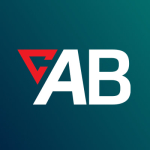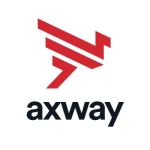What is our primary use case?
RunMyJobs is very flexible, and once you set a job chain up, it runs like clockwork. One of my favorite features is the custom calendars that allow you to run jobs only when you want them to. It doesn't have to be daily, weekly, or monthly only.
We implemented a new system, and the business users had to run tasks manually. We were able to create some standard processes that could be used over and over with just different parameters to automate over 100 manual tasks, which saved the users from having to work nights and weekends.
There is no dislike point or comment at this time since Redwood is already doing a great job in the automation tool sector. For a first-time installation, we need a good amount of knowledge to install Redwood in our organization. Apart from this, I don't have any dislike point as of now.
How has it helped my organization?
We implemented a new system and the business users had to run tasks manually. We were able to create some standard processes that could be used over and over with just different parameters to automate over 100 manual tasks, which saved the users from having to work nights and weekends.
Redwood is already doing a great job in the automation tool sector. For the first-time installation, we need a good amount of knowledge to install Redwood in our organization. Apart from this, there is nothing to dislike as of now.
We can easily track the status of the job, and if any error is encountered we can easily solve that issue via the given familiar functions.
What is most valuable?
This tool helps us to schedule and monitor jobs related to SAP modules like FI, MM, SD, HR, etc. It also provides the cancellation, start, and restart of the process for the running jobs at the same time as per the business requirements.
From the monitoring perspective, we can easily track the status of a job, and if any error is encountered, we can easily solve that issue by the given familiar functions.
It is easy to overcome complicated tasks. This tool helps us to monitor the job related to SAP modules. There won't be a memory outage issue; it will work with all browsers.
What needs improvement?
It's amazing how easy it is to use Redwood Business Process Automation and implement it in my work
The areas it needs improvement are in the directional use. To start is a bit difficult. More instructions will help.
We need the ability to pull data into an Excel format. That would also quite help to tally and get data effortlessly.
I am fascinated with the performance that this software allows me to have. It is fully functional and meets all the requirements to help me carry out my work effectively. I use it safely and without any inconvenience on an SAP platform. It is really comfortable, and I like it.
It helps me to synthesize all the programming of a wide variety of jobs that enter our database daily and must be corrected in record time.
This digital platform allows me to configure certain aspects for efficiency in different processes,
For how long have I used the solution?
I've used the solution for about six months.
What do I think about the stability of the solution?
The stability of the tool is quite amazing. It is quite user-friendly and helps in scheduling jobs effortlessly in the production environment.
What do I think about the scalability of the solution?
This tool helps us to schedule and monitor jobs related to SAP modules like FI, MM, SD, HR, etc. It also provides the cancellation, start, and restart of the process for the running jobs at the same time as per the business requirements.
From the monitoring perspective, we can easily track the status of the job, and if any error is encountered, we can easily solve that issue by the given familiar functions.
How are customer service and support?
Technical support is good.
How would you rate customer service and support?
Which solution did I use previously and why did I switch?
I previously used Amazon Batch and I wanted to try a different user interface.
How was the initial setup?
It was straightforward to set up. That said, instructions would be helpful to navigate at the beginning. We'd like have toolbar options show detail and their use case at the outset.
What about the implementation team?
We implemented it through the vendor team. Their level of expertise was 10/10.
What was our ROI?
We have witnessed an ROI of 10%.
What's my experience with pricing, setup cost, and licensing?
The solution has perfect pricing. It is very good for exploring a new platform.
Which other solutions did I evaluate?
I did evaluate Amazon Cloud Watch. It has a good user interface.
Which deployment model are you using for this solution?
Public Cloud
Disclosure: My company does not have a business relationship with this vendor other than being a customer.





















